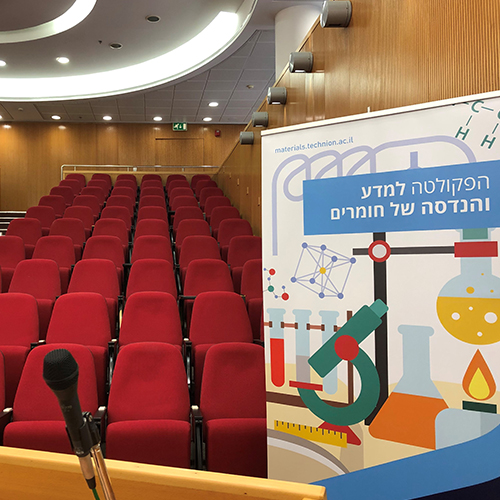
Ms. Inbal Geva - M.Sc. Candidate
26/01/2025
David Wang Auditorium, 3rd floor Dalia Meidan Bldg.
14:30
Artificial intelligence is pushing our current CMOS-based hardware to its limits. Meeting its ever-growing demands requires a paradigm shift, using new biomimetic materials in hardware-level computing elements. One promising family of materials for such applications are Mott insulators which exhibit insulator-to-metal transitions. These materials may change their resistance by orders of magnitude in response to electrical and thermal stimuli, exhibiting dynamics which resemble that of biological neurons. As the electronic transition is often coupled to a structural transition, elastic interactions may play a significant role in determining the evolution of the transition both in equilibrium and dynamically. However, such effects are poorly understood on a microscopic level.
To shed light on these phenomena we modelled V₂O₃ Mott insulator thin film devices as a resistor network, in which each resistor may undergo a transition between the metallic and insulating states, depending on interactions with neighboring resistors. This enabled us to simulate both the thermally- and electrically-driven switching. We compared the computational results to electrical transport measurements conducted on thin film devices with highly anisotropic metal-insulator domain structures, as imaged with a cryogenic microscope. By changing the orientation of the device electrodes with respect to the crystallographic orientation of the V₂O₃ films, we were able to observe substantial differences in switching properties, offering insights on structural tuning of Mott insulators’ electrical properties.


